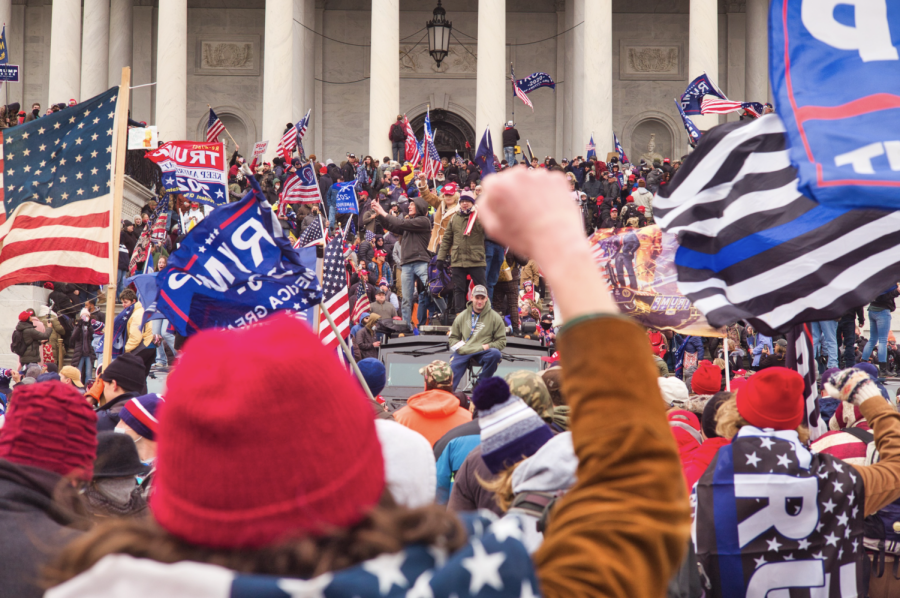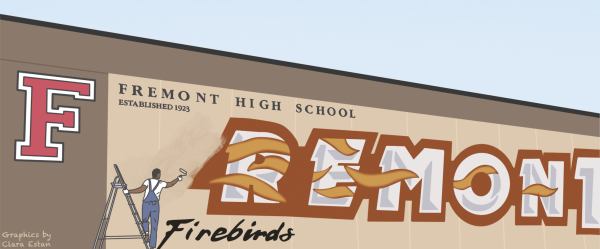Capitol riots one year later
Jan. 6, 2021 is a day that America will forever remember. Without a doubt, the insurrection has made an impact on our government. Never in this country’s nearly 250 year history has there been an event quite like this.
Though the insurrection took place on Jan. 6th, the planning began months in advance. Former President Donald Trump began spreading an idea among his party members that the only way that he could rationally lose the election was if it was rigged.
On Dec. 12, 2020, Trump tweeted “WE HAVE JUST BEGUN TO FIGHT!!!,” showing how he was actively trying to rile up and anger his supporters. It was this, alongside Trump’s speech, that led his angered supporters to fight for what they thought was democracy.
January 6 is always the day the presidential election is certified via the official counting of the electoral college votes. The day started off as usual, with Trump supporters simply gathering a few blocks away from the capital to listen to Trump’s speech. Many people were aware of a possible protest or march after Trump spoke so the Capitol police had placed some fences to guide the public. This, as would be shortly proved, was certainly not enough. As Congress got started on their normal procedural process of certifying the elections, Trump supporters began marching closer and closer to the Capitol.
As the rioters approached the Capitol, they began plotting to break into the Capitol and more specifically the Senate chamber where the votes were being certified. Soon, more and more people came up the steps of the Capitol. Many police officers tried to stop them from moving any further but soon gave up as they were not able to match the number of rioters. Pepper spray and tear gas were used by both parties, leaving five dead and many injured. At one point, some insurrectionists had erected a noose and could be heard shouting “hang Mike Pence.” Unfortunately for Trump, neither Mike Pence nor any vice president can change the results of an election.
After rioters breached the Capitol, the majority of Congress and staff were evacuated from the building. Many trespassers began exploring the private offices as well as the senate chambers. The rioters were inside for nearly five hours.
Finally, the Capitol Police were able to secure the inside of the Capitol building.
Congress later launched committees that investigated how Capitol police were so underprepared as well as who might be responsible.
The insurrection showed the world that the democracy of the United States, at the moment, is weak, frail and divided. Those in Congress who spoke against Trump and his claims of voter fraud were ousted; only those who stood by and promoted his lies would be safe from his taunting behavior.
This deepening rift between the Democratic and Republican parties has already existed for a long time.
“Since the 1990s [..], we’ve really seen a growing split within the United States,” Anne Santiago, PhD, a professor of Political Science at the University of Portland, said. “And a lot of that, you know, I really put [blame] on the partisan leaders of the country. And in particular, I put that more on Republican leaders than I do on Democratic leaders, because it was in the 1990s […] a number of leaders within the Republican Party decided that they [were] going to basically put the Republican Party ahead of the country, and win at all costs. […] And so it’s this sort of approach that either we get to win, and we get our way, or we’re going to take our ball, and we’re going to go home.”
Many Trump supporters now falsely claim that the insurrectionists were actually members of Antifa, a left-wing anti-facist and anti-racist political group, in disguise as Trump supporters. Although extensive investigations have found no concrete evidence of mass voter fraud, 77% of Republicans still believe that the 2020 election was fraudulent, according to a poll conducted by Quinnipiac University.
“I am not particularly hopeful,” Santiago said. “Honestly, I think we are at a point where the divisions are going to continue and probably be exacerbated. I would like to think that over time, maybe some cooler heads can prevail. But I also think one of the problems is that there is this massive split in the United States. We’re not seeing […] enough movement towards reconciliation [from our leadership] because they’re so concerned with reelection.”













